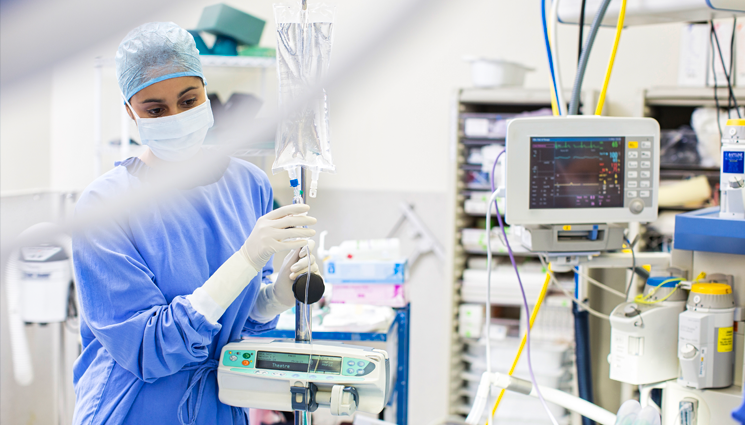
Oxygen Therapy & Ventilation
Experienced team trained in critical care, with a cumulative experience of >30 years.
Our services include a full-fledged respiratory ICU, with state-of-the-art equipment, a flourishing respiratory therapist program, ECMO program, and ICU bronchoscopy.
Invasive Ventilation
During acute respiratory failure, patients may require additional support to maintain adequate oxygenation and ventilation. In critical care settings, three common methods of respiratory support are mechanical ventilators, non-invasive ventilators, and high-flow oxygen therapy.
Mechanical Ventilators: Mechanical ventilators are life-saving machines used when patients cannot breathe adequately on their own. These situations might arise during critical illnesses or surgeries.
The ventilator delivers a controlled amount of oxygen and helps remove carbon dioxide from the lungs. It consists of a breathing tube that is placed into the patient’s airway via intubation. The settings of the machine can be adjusted by healthcare professionals to tailor the support to individual needs. Mechanical ventilation is essential in supporting the respiratory system during severe illness, but it does not treat the underlying condition directly.
Non-invasive ventilation
Non-invasive ventilators are an alternative to mechanical ventilators and are used in cases where patients require respiratory support but don’t need intubation. Instead of inserting a breathing tube, non-invasive ventilators deliver air through a mask or nasal prongs, making them more comfortable and reducing the risk of complications associated with intubation. These devices are useful in conditions like chronic obstructive pulmonary disease (COPD) exacerbations or acute respiratory failure. They help improve oxygenation and reduce the effort required for breathing.
